The right Apple Watch band transforms your experience, delivering all-day comfort, personal style, and performance for any activity.
Our guide simplifies your choice: explore types, check model compatibility, measure your wrist, and discover the ideal band for your life!
Types of Apple Watch Bands
These are the main categories of bands you would see from Apple and established third-party families, their feel, and where they work best.
1. Sports Band (Fluoroelastomer)
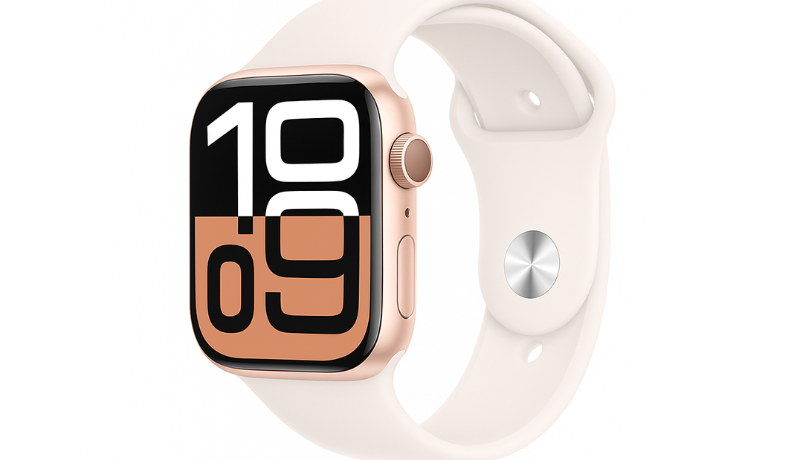
Sport Bands are the “default” Apple Watch strap you see everywhere. The material is much accomplished than it looks.
Fluoroelastomer (often with the term FKM) is a high-performance synthetic rubber, a technical polymer used for demanding industrial and automobile applications. FKM and Silicone are often considered high-quality components.
As there are holes in the pin and tuck for fitting adjustments, it fits a range of wrist sizes and can be slightly tightened for workout purposes and loosened for more casual wear.
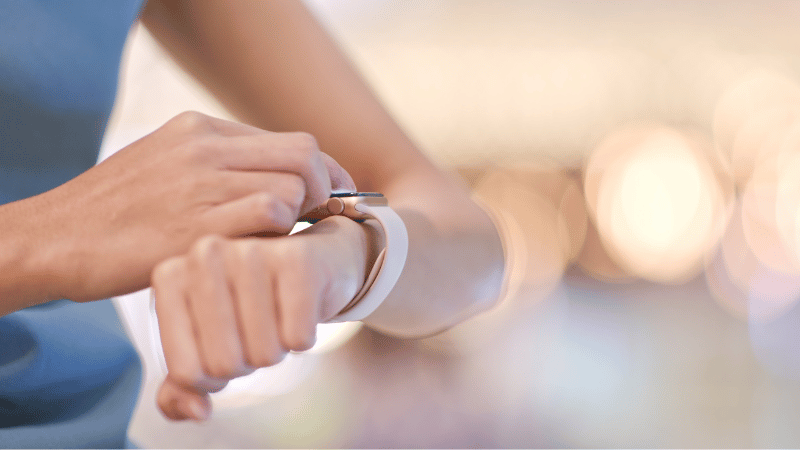
Best for: running, gym, swimming, or anyone looking for a low-maintenance, all-encompassing strap.
2. Sport Loop
The Sport Loop is Apple’s solution for those who prioritize activity all day long. Its construction is of woven nylon on the outside and soft and slightly fuzzy on the inner side for skin gentleness. Hook-and-loop (the Velcro type) fastener is used instead of holes and pins.
Best for: daily wear, looks casually styled, sensitive skin types that dislike rubbery-type bands.
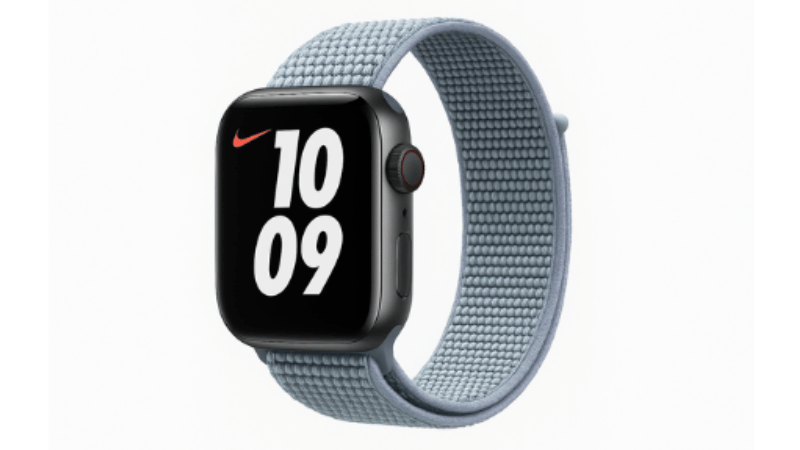
3. Solo Loop and Braided Solo Loop
These two types of band designs are interesting in that they have no buckle, clasp, or closure of any kind; they appear as one continuous band designed to stretch will over the forehand and then slowly contract around the wrist.
Solo Loop: The look and feel of this liquid silicone rubber blend is a smooth, stretchy existence.
Braided Solo Loop: A loosely woven polyester yarn interspersed with silicone threads, giving the appearance of a textile with the added features of industrial silicone.
Apple provides a series of numeric sizes (1-9) correlated to the particular wrist measuring sizes and offers a printable sizing tool, plus in-store fitting assistance.
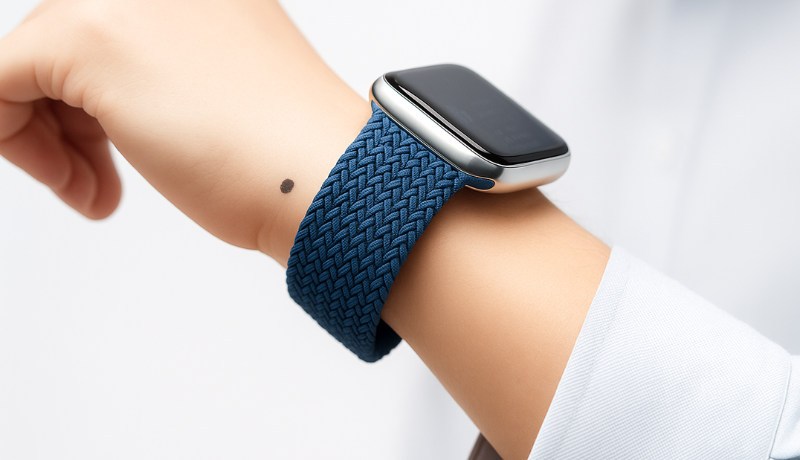
Best for: the minimalist, anyone wishing for a completely clean aesthetic, and those who do not want to feel a clasp on their wrist.
4. Nike Bands (Sport & Sport Loop)
Nike makes its bands for sweating athletes. They are in two categories:
- Nike Sport Band: It differs from the regular Sport Band in that it has lots of perforations with holes all over it so that airflow is maximized and sweat doesn’t build up as easily.
- Nike Sport Loop: This is for the Sport Loop and comes with a really fun variety of colors strung with reflective yarn.
Best suited for: Runners, gym-goers, basically anyone who trains regularly and wants maximum breathability.
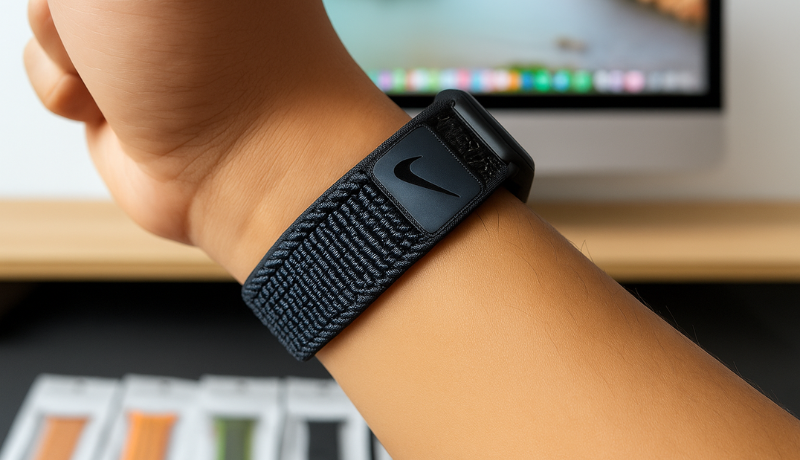
5. FineWoven Bands
FineWoven, a new material developed by Apple that replaces leather and aims to be more eco-friendly and animal-free, is much softer than leather. It has a suede-like feel. It is used in several bands, including this one, which resembles straps of Modern Buckle.
Suitability: Professionals, concerned about style and the appearance of users, experts living the leather look without using animal products
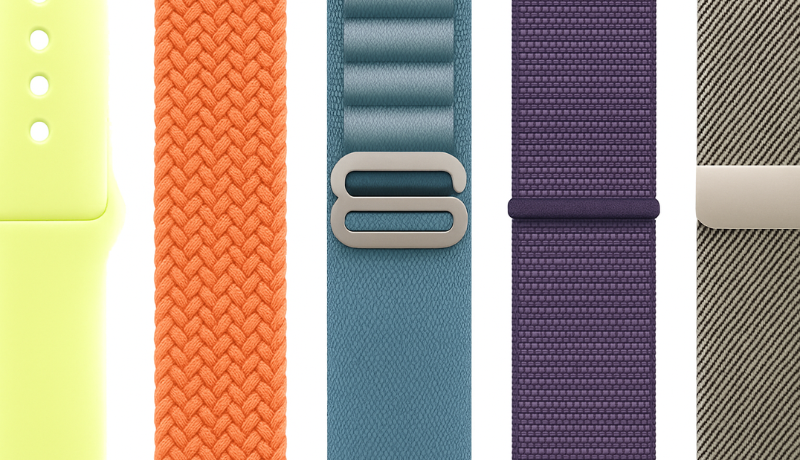
6. Stainless Steel Bands Link Bracelet Milanese Loop
For those interested in having their Apple Watch feel just like the regular luxury watch of yesteryear, stainless steel is the classic choice.
- Link Bracelet: made of interlocking metal links fastened together, most of the time with a butterfly clasp. This has to do with adding and removing links to get just the perfect length.
- Milanese Loop: A woven stainless steel mesh around the wrist closes with a magnet.
Best for: business settings, formal events, and anybody who wishes to turn their Apple Watch into a piece of jewelry just like “old-fashioned” watches.
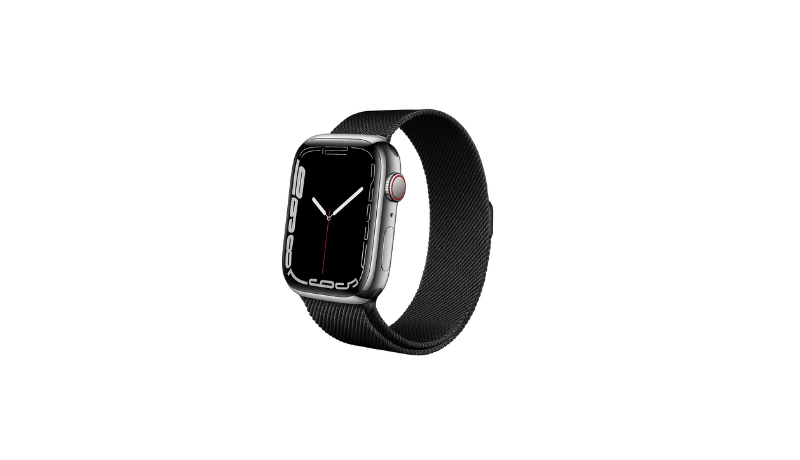
7. Hermès Bands
Hermès bands are at the very high end of the luxury market. Made of extremely fine leather with particular stitching, branding, and some Double Tour (double wrap) concepts to boot, they are geared to the fashion-conscious crowd.
Best for: Luxurious buyers, fashionistas, and users treating their Apple Watch just as designer stuff.
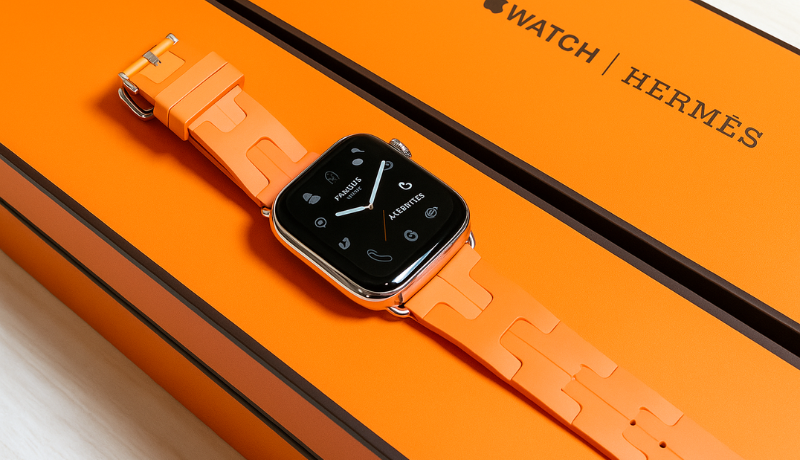
8. Apple Watch Ultra Bands
The Apple Watch Ultra and Ultra 2 (as well as subsequent Ultra models) are primarily designed for outdoor enthusiasts, divers, and extreme sports users. In fact, Apple made a specific collection of bands to match that purpose.
- Trail Loop: lightweight, thin, and highly breathable with a hook-and-loop closure for quick adjustment. Excellent for running, hiking, or other endurance sports.
- Alpine Loop: a rugged, woven band with a titanium G-hook closure that locks into reinforced loops, specifically designed for climbing, trekking, and rough conditions.
- Ocean Band: it’s a flexible fluoroelastomer with tubular construction to wear over the wetsuit. Optimized for water sports or diving.
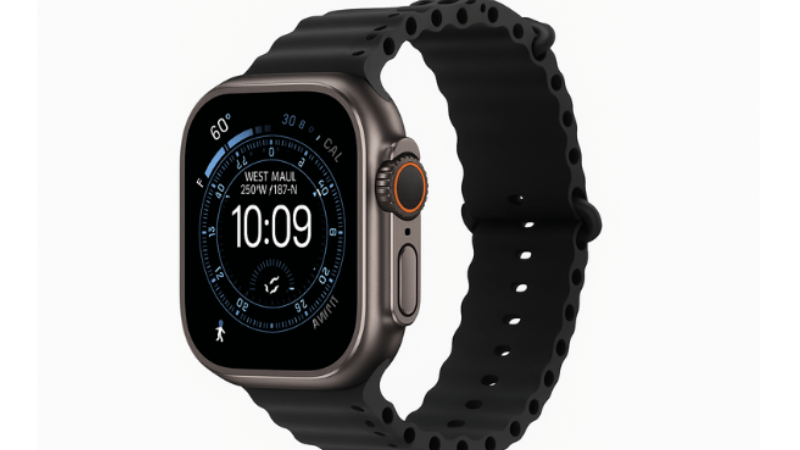
Apple Watch Band Compatibility Overview
First of all, make sure that the strap you’re falling head over heels for fits the Apple Watch case you own. The good news: The connection for bands hasn’t changed with the generation at all.
Two Main Case Size Families
There are quite a few millimeter sizes for Apple Watch cases, but they still fall in one of two main families:
Small: 38mm, 40mm, 41mm
Large: 42mm, 44mm, 45mm, 49mm (including Ultra models)

Apple Watch Band Compatibility Chart
Here’s a simplified compatibility overview:
| Apple Watch Model | Case Sizes | Compatible Bands | Notes |
|---|---|---|---|
| Series 1–3 | 38mm / 42mm | 38/40/41mm (small) and 42/44/45mm (large) | Earlier models; official stock is more limited |
| Series 4–6, SE | 40mm / 44mm | 38–41mm (small) and 42–45mm (large) | Fully backward-compatible within families |
| Series 7–9 | 41mm / 45mm | 38–41mm (small) and 42–45mm (large) | Slight width differences, but fit is fine |
| Ultra / Ultra 2 | 49mm | 42–45mm / 49mm (large-family bands) | Larger lugs; some bands look/feel different |
Extra Tip for Backward Compatibility
For a 41 mm Apple Watch, any band designed for the 38 mm, 40 mm, or 41 mm case size will fit properly, as all three sizes belong to the same band family. Likewise, bands made for the 42 mm, 44 mm, and 45 mm Apple Watch models are interchangeable within their group.
Many of these larger-case bands can also be used with the 49 mm Apple Watch Ultra, although fit and appearance may vary depending on the band style.
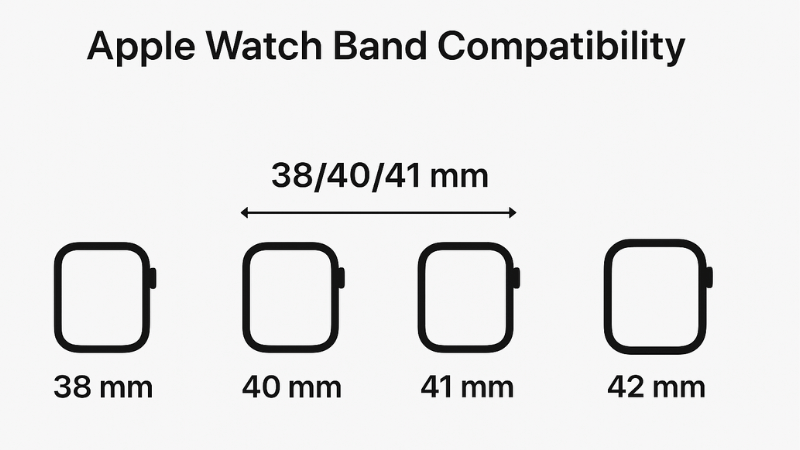
Finding the Perfect Fit for Your Apple Watch Band
Let’s see how to get the right fit for your Apple Watch Band
How to Measure Your Wrist (Step by Step)
No need for fancy tools: just a little accuracy.
- Take a custom measuring tape, and wrap it around your wrist right below the wrist bone (i.e., the region where you like to wear your watch).
- Make a note of the measurement where the tape overlaps. For compatibility with Apple charts, it is better to note this in millimeters.

- Compare your measurement with the Apple Band Size Guide or the sizing chart provided by the manufacturer of your band.
- If it turns out you are between sizes, go for the larger size for comfort, particularly in bands made from less flexible materials such as stainless steel or FineWoven.
- If you do not have a tape measure, use a string, mark the spot where it wraps around your wrist, and measure the string against a ruler.
Apple Watch Strap Size Chart (Approximate Ranges)

Here is the concise table containing sizes:
| Band Type | Small Fit (mm) | Medium Fit (mm) | Large Fit (mm) | Notes |
|---|---|---|---|---|
| Sport Band | 130–180mm | 150–200mm | 170–210mm | Adjustable holes; versatile |
| Sport Loop | 130–190mm | 145–220mm | – | Fully adjustable hook-and-loop |
| Solo Loop | 125–200mm | 145–215mm | 160–245mm | Requires precise sizing |
| Milanese Loop | 130–200mm | 150–210mm | – | Magnetic closure with wide range |
Fit is Critical
Fit is not merely a source of comfort; it also affects the performance of the sensors and the lifespan of the band.
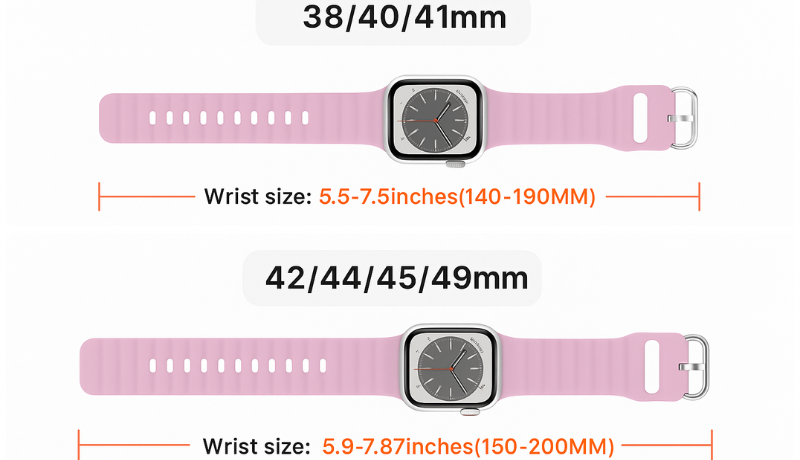
- Tight: the liquid silicone rubber band may leave marks, retain sweat, create discomfort as time goes on, and even cause an allergy, especially if it becomes composed of non-breathable materials.
- Loose: the watch spins around and leads to bad and inconsistent heart rate readings, errant workout counting, and gives a “sloppy” feel.
- Best fit: tight enough to keep the sensors in contact with your skin, but loose enough to allow a finger to move between the band and your wrist comfortably.
Find the Right Band for Your Life
You can have more than one band. Most people usually use 2-3 bands on different days. Here is a summarized matter on how every band style suits each type of user, followed by an explanation.
Lifestyle Recommendation Table
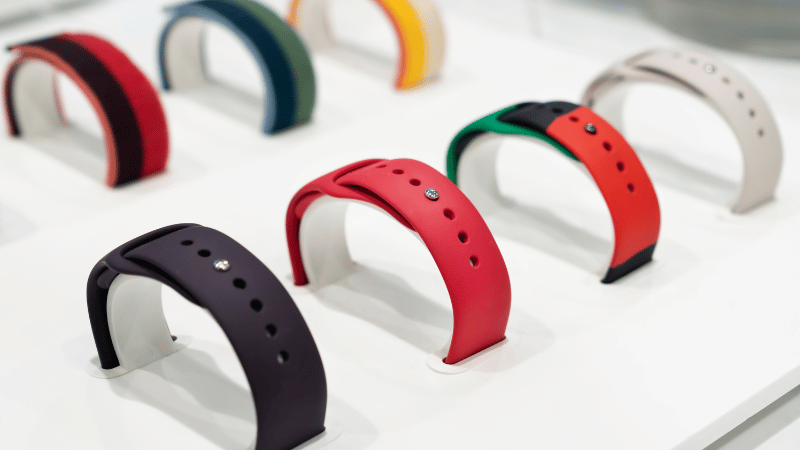
| User Type | Recommended Bands | Why They Work Well |
|---|---|---|
| Everyday users | Sport Loop, Solo Loop | Comfortable, lightweight, easy to wear all day |
| Fitness enthusiasts | Nike bands, Sport Band | Sweat-resistant, secure, quick to clean |
| Professionals | FineWoven, Stainless Steel | Polished, formal, coordinates with office outfits |
| Outdoor adventurers | Apple Watch Ultra bands | Rugged, secure, optimized for extreme conditions |
| Style-conscious users | Hermès, designer third-party options | Unique designs, premium materials, fashion-forward |
Tips on Changing and Maintaining Your Apple Watch Band
These few easy habits will do a fantastic job over time in extending the life of your bands and keeping them looking fresh.
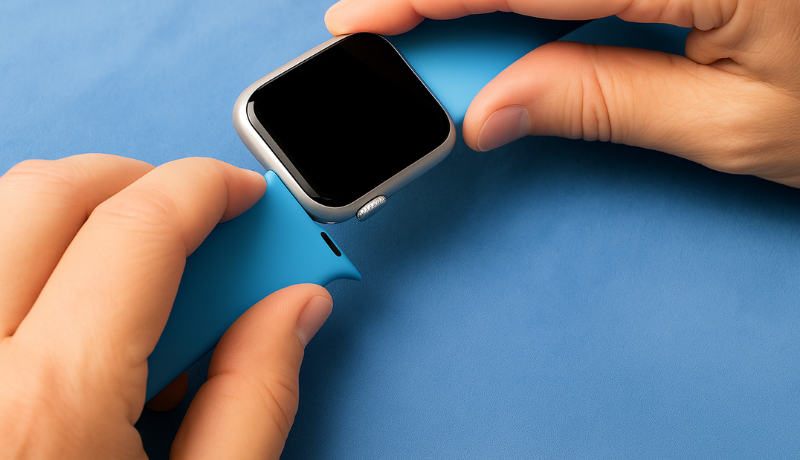
Clean based on the material
- Fluoroelastomer and silicone: Clean the silicone and FKM watch straps with water and mild soap, then dry with a soft cloth.
- Woven nylon and loops: wipe gently with a damp cloth; avoid soaking in harsh detergents.
- Fine-woven and leather-like materials: use a slightly damp cloth and let them air dry; avoid direct heat and cleaners.
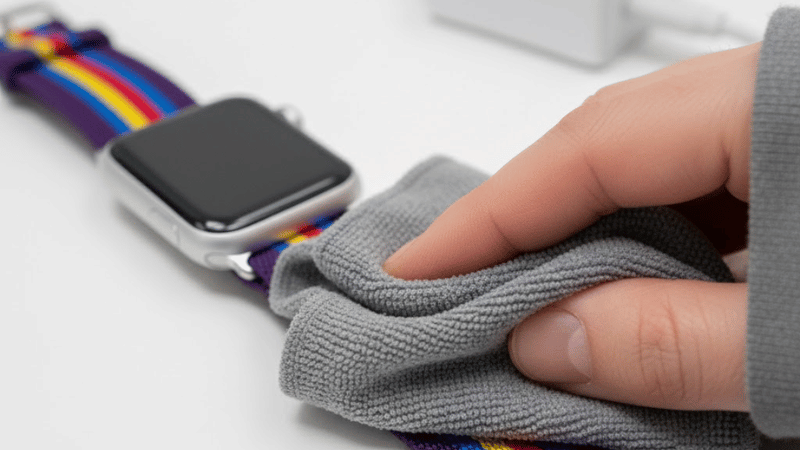
Avoid harsh chemicals
Perfume, sunscreen, oils, and solvents like Parabens can discolor or weaken many band materials over time. Put these on first, let them dry, then wear your watch.
Detach with Care
Press the button for release of the bands to the back of the watch while holding it down, and slide away the band for smooth removal. Forcing it or twisting it in an aggressive manner would cause damage to the lugs over time.

Are Third-Party Apple Watch Bands Worth It?
In short, yes, if chosen carefully.
Pros of Third-Party Bands
- People pay much less to third-party sellers for similar styles as compared to Apple’s.
- Variety: more colors, textures, patterns, and niche designs than Apple can offer.
- Customization: Brands can tailor materials, finishes, and lengths to specific markets or business customers.
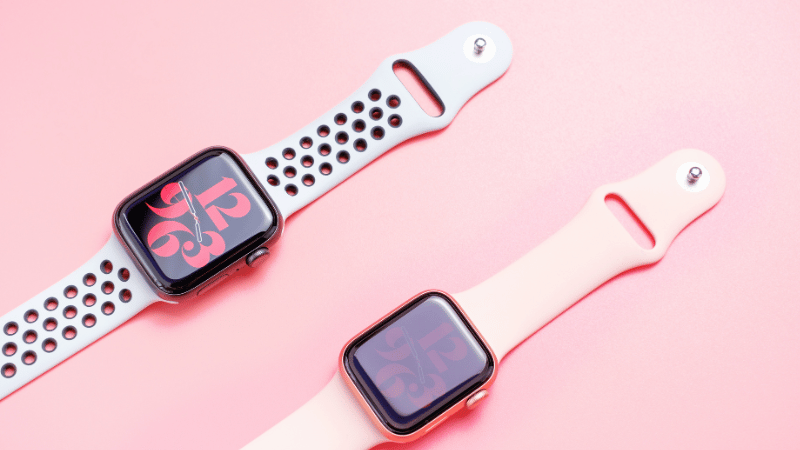
Cons to Watch Out For
- Fit and tolerance: Poorly made bands can have lugs that do not line up flush or slide smoothly, causing scratches on the watch or even detachment at times.
- Weaker clasps or magnets: bad quality buckles and magnets often wear out fast, especially when taking them on and off.
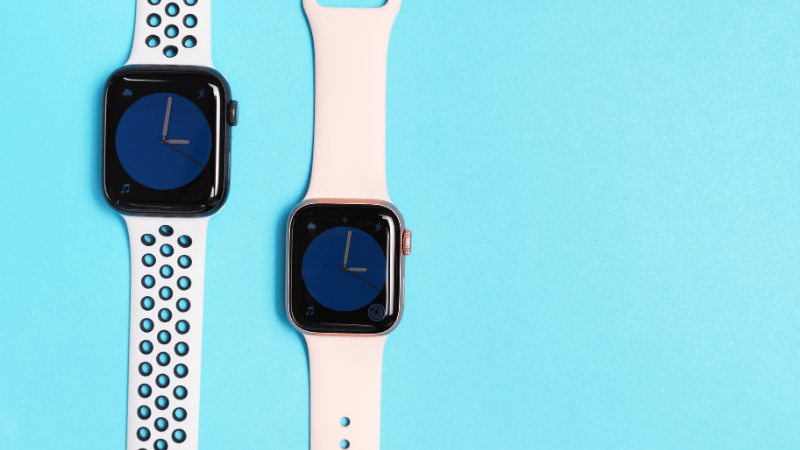
It is always a good practice to stick with MFi-compliant or reputable manufacturers with documented experience in silicone and elastomer production to enjoy complete peace of mind.
These include companies like Hongju Silicone that specialize in developing excellent quality silicone and fluorocarbon elastomeric rubber products, as well as OEM/ODM services to very demanding customers.

Manufacturers with deep expertise in silicone and fluoro rubber:
- Understand the tolerances needed for secure Apple Watch lug connections
- Can , and color stability
- Are better positioned to supply B2B buyers who need reliability at scale, not just a one-off band
Conclusion
The perfect Apple Watch band sits where comfort, performance, and personal style meet. Choosing the right one matters. Knowing the size families, compatibility rules, and material differences makes it much easier to personalize your watch.
And when you pick the right band, your Apple Watch becomes more comfortable, more functional, and more “you.”
Power Your Brand With Precision-Made Apple Watch Bands
Partner with Hongju Silicone for rapid prototyping in just a few days. Enojoy flexible low MOQs tailored to your demand, and expert craftsmanship backed by 20+ years of manufacturing experience.
Get reliable quality, stable supply, and full customization support from a professional B2B team.
Contact us now to discuss your requirements!
FAQs
Q1: Are all Apple Watch bands interchangeable among models?
No, not all Apple Watch bands are interchangeable, but most are compatible within two main size groups:
- 38mm, 40mm, and 41mm bands work with each other.
- 42mm, 44mm, and 45mm bands work with each other, and many also fit the 49mm Ultra, though the fit may vary by style.
As long as the band matches its size group, it will usually fit correctly.
Q2: What makes fluoroelastomer (FKM) bands superior to ordinary silicone bands?
In many ways, FKM, perhaps better known as fluoroelastomer, is a high-performing rubber superior to standard silicone. Thus, fluoroelastomer is typically preferred for industrial seals, O-rings, and heavy-duty wearables, as well as smart for serious Apple Watch bands.
Q3: Are fluoroelastomer Apple Watch bands comfortable for everyday use?
Though very technical, fluoroelastomer bands are very smooth and soft against the skin. Most users would find it comfortable enough to wear throughout most of the day at work, during exercise, and even while sleeping, especially with proper sizing and without over-tightening.
Q4: How to choose the proper size for the Apple Watch band?
Check your Apple Watch case size and measure your wrist, then match it to the band’s size chart (S/M, M/L, or Solo Loop number).
If you’re between sizes, pick an adjustable band for flexibility and wear it slightly snug for workouts but comfortably loose for everyday use.